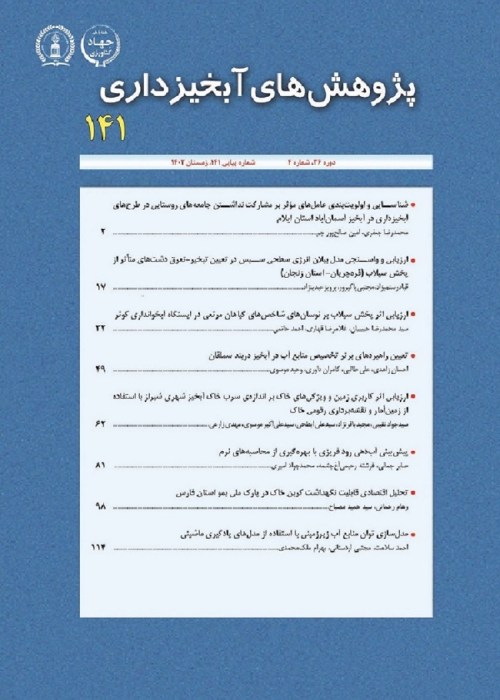Monitoring Land Degradation and Desertification in the Arid and Semi-arid Regions with an Emphasis in Response to Gross Primary Production Relative to the Climatic Variables during the 2001-2017 in the Province of Fars
An accurate assessment of the carbon changes in different ecosystems may be used as key indicator in estimating changes in land degradation at a global scale. The goal of this study was investigate the trend of land degradation by examining the trend of changes in the gross primary production, climatic parameters (temperature and precipitation) and its relation shies with the climatic data in the 2001-2017 period in different land use system in the Province of Fars. The annual gross primary production data were extracted from the MOD17A2 8-day MODIS sensor, and the climatic data were collected from 15 stations in the region and interpolated. The slope of changes in the gross primary production, temperature and precipitation, and the correlation between the gross primary production and temperature and precipitation in each land use were investigated. The results indicated that the highest percentage of the gross primary production was obtained for the shrub land, farmland, bare land, grassland, urban and built up land and water bodies, respectively. Examination of the slope of the changes showed that overall trend of changes in primary the gross primary production was increasing, while the temperature and precipitation trend were increasing and decreasing, respectively. The reason for this is the groundwater use by farmers to provide the needed water for irrigation, resulting in an increase in the gross primary productivity. Percentage of the changes in the gross primary production, temperature and precipitation in different land uses over the mentioned time period indicated that the trend of positive changes of the gross primary production in bare land use was 78.24%, farmland was 32.32%, grassland was 81.14%, shrub land was 85.89%; in the savannah it was 100%. We observed an increasing and decreasing trend for the temperature and rainfall over this time period, respectively. Based on the results, the correlation in bare land, savanna and shrub land is mostly influenced by precipitation, whereas farmland and grassland are affected by temperature. In general, despite of increasing temperature and decreasing rainfall, the gross primary production increased in the farmland, which indicates that such expanses are susceptible to land degradation and desertification.
- حق عضویت دریافتی صرف حمایت از نشریات عضو و نگهداری، تکمیل و توسعه مگیران میشود.
- پرداخت حق اشتراک و دانلود مقالات اجازه بازنشر آن در سایر رسانههای چاپی و دیجیتال را به کاربر نمیدهد.


